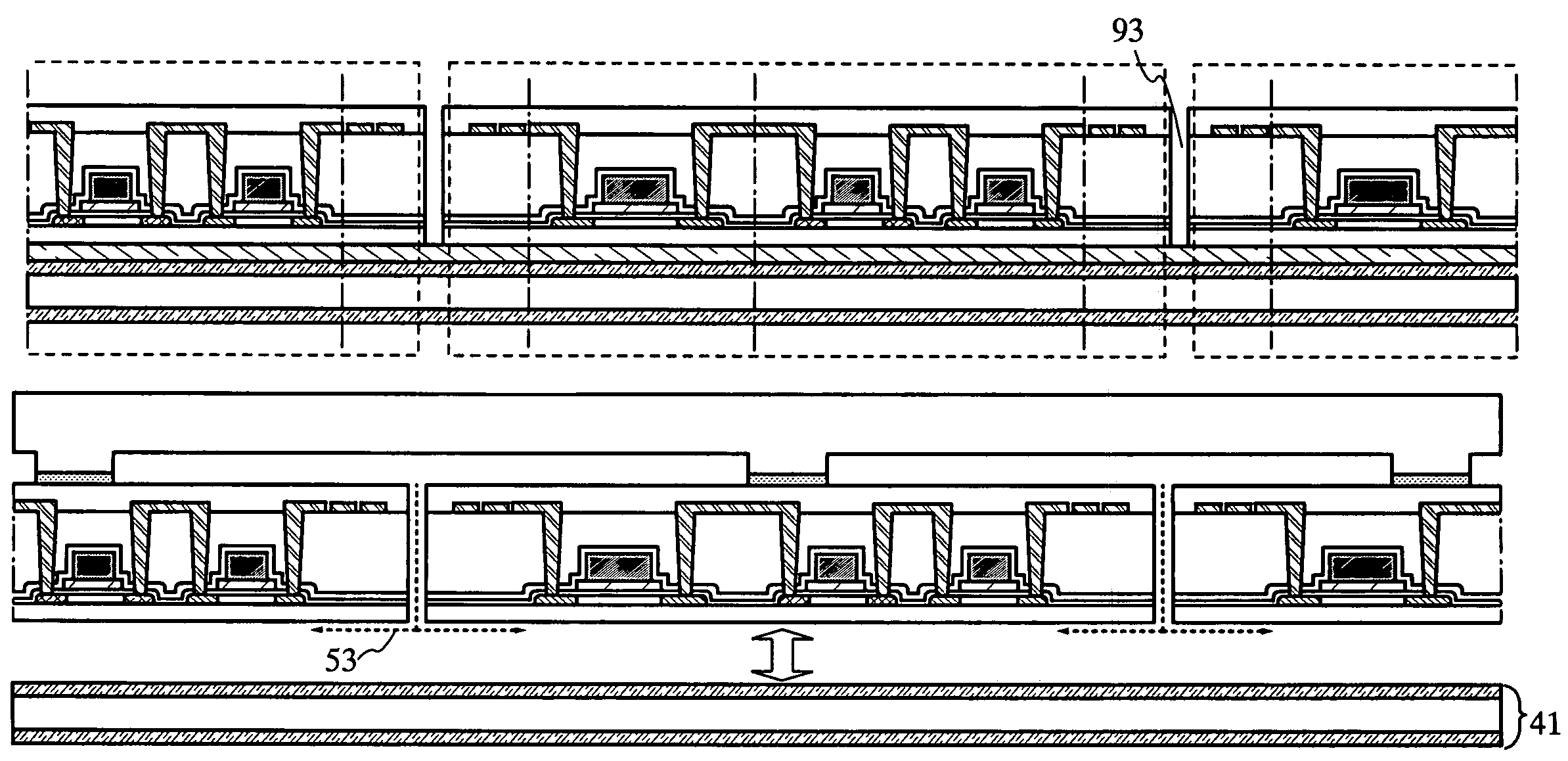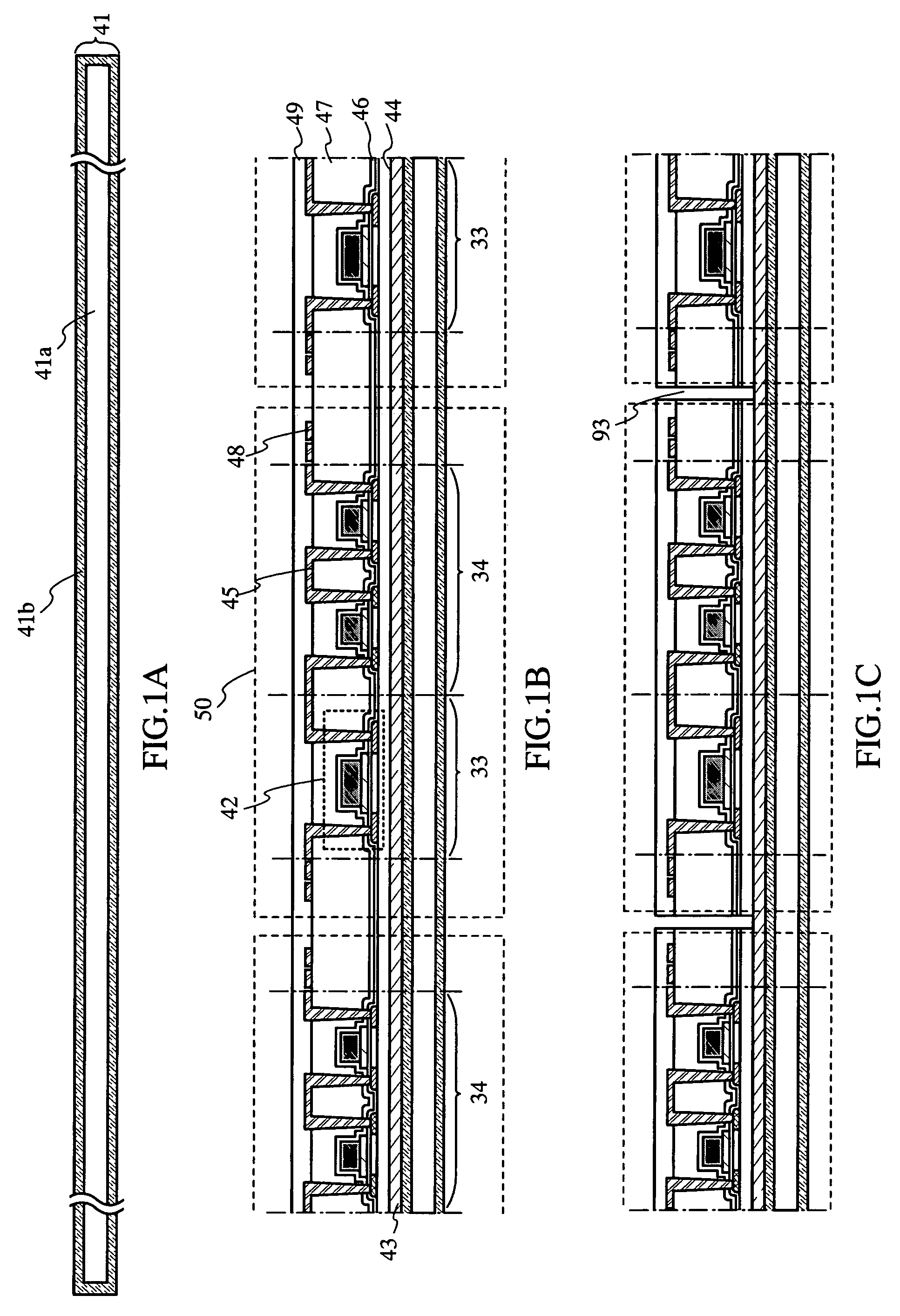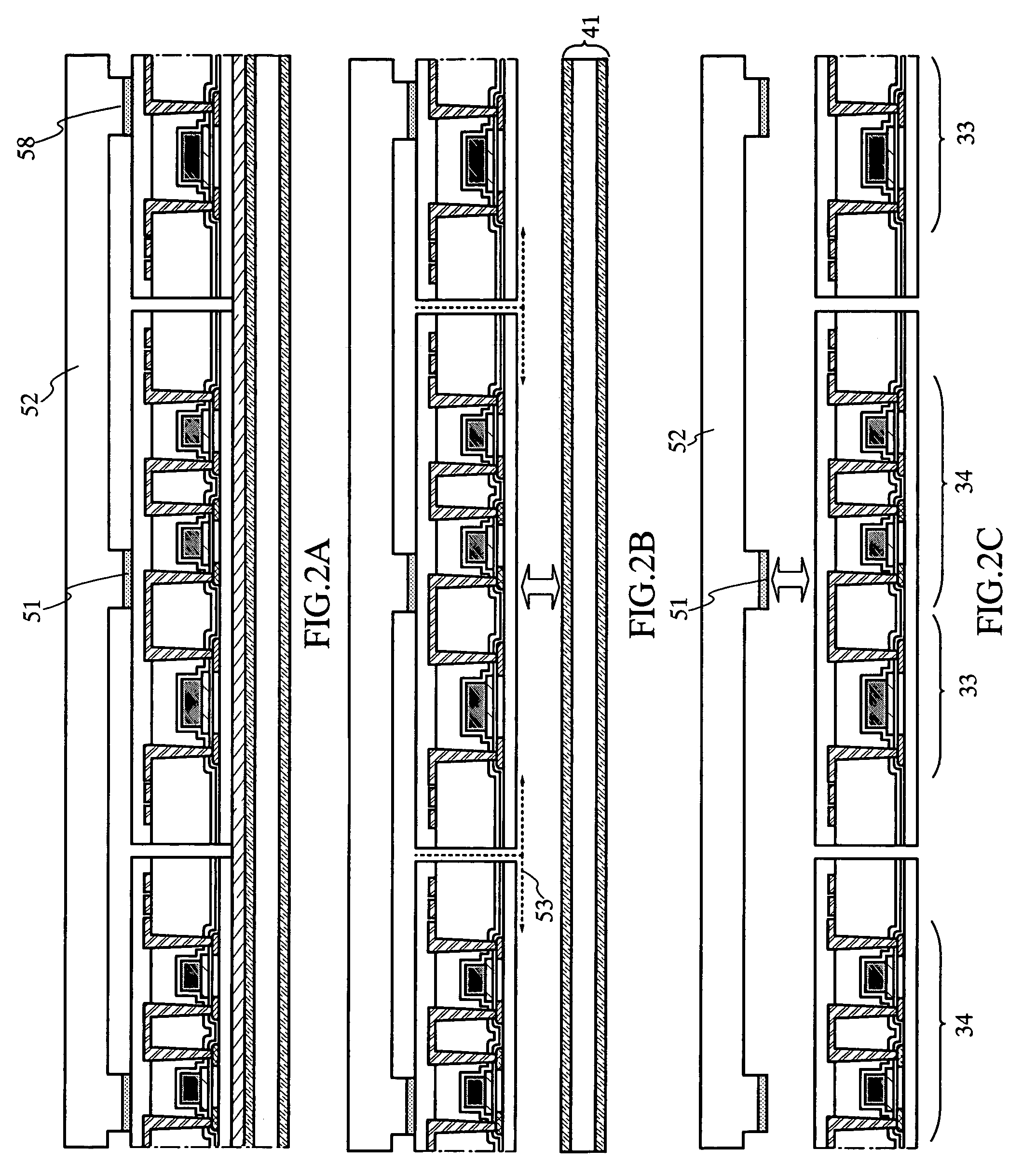Manufacturing method of thin film integrated circuit device and manufacturing method of non-contact type thin film integrated circuit device
a manufacturing method and technology of integrated circuits, applied in semiconductor devices, semiconductor/solid-state device details, instruments, etc., can solve the problems of limiting the design range, increasing manufacturing costs, and reducing the yield of substrates, so as to achieve effective use of substrates, reduce manufacturing costs, and improve yield and throughput.
- Summary
- Abstract
- Description
- Claims
- Application Information
AI Technical Summary
Benefits of technology
Problems solved by technology
Method used
Image
Examples
embodiment mode 1
[0085]A thin film integrated circuit device and manufacturing method thereof according to the present invention will be described with reference to mainly FIGS. 1A to 1C, FIGS. 2A to 2C, and FIGS. 3A and 3B. First, a silicon wafer 41a is prepared, and an oxide film 41b (silicon oxide film) is formed at a surface of the silicon wafer 41a by performing a thermal treatment to obtain a thermally oxidized silicon substrate 41 (FIG. 1A). As a method for the thermal treatment, a thermal treatment at 800 to 1200° C. (preferably at about 900° C. or 1150° C.) may be performed, which, however, is not limited to these temperatures.
[0086]Although all surfaces or at least one surface of the semiconductor substrate may be oxidized, it is preferable that all of the surfaces are oxidized to form silicon oxide, in order not to damage the semiconductor substrate when halogen fluoride such as ClF3 is used to separate a thin film integrated circuit device from the substrate later. This is because silico...
embodiment mode 2
[0108]In the present embodiment mode, a case of using dry etching for forming the groove 93 will be described with reference to FIGS. 4A to 4C. FIG. 4A is the same as Embodiment Mode 1 up to the state of FIG. 1A. Thereafter, a resist 54 is formed over the substrate by processes of exposure and development, and a groove 93 is formed by dry etching with the resist 54 as a mask to separate devices (FIG. 4A). Plasma etching is employed here, and a chlorine-based gas typified by Cl2, BCl3, SiCl4, CCl4, or the like, a fluorine-based gas typified by CF4, SF6, NF3, or CHF3, or the like or O2 is used as an etching gas, which is not limited to these. The etching can be performed by utilizing atmospheric pressure plasma. In this case, it is preferable to use a mixed gas of CF4 and O2 as an etching gas. Alternatively, etching with the use of a different kind of gas may be performed several times to form the groove 93.
[0109]After the etching, the resist 54 is left as it is, and made to function ...
embodiment mode 3
[0112]In the present embodiment mode, a case will be described, where the thermally oxidized silicon substrate 41 or a SOI substrate such as a SIMOX substrate is used again in the case of scratching the substrate on forming the groove 93 by a method such as dicing. As a first method, a planarization film 57 is formed on a used substrate 56 as shown in FIG. 5A. As the planarization film 57, polyimide, acrylic, polyamide, or a heat-resistant resin such as siloxane can be formed by a method such as spin coating, dipping, spraying, or droplet discharge (for example, inkjet). In consideration of thermal treatment of a post-process, it is preferable to use a heat-resistant resin such as siloxane. Alternatively, an inorganic material such as PSG (phosphosilicate glass), BPSG (borophosohposilicate glass), or alumina may be used. The following processes are the same as in Embodiment Mode 1 or 2.
[0113]As a second method, there is a method of using CMP (chemical mechanical polishing) for plana...
PUM
 Login to View More
Login to View More Abstract
Description
Claims
Application Information
 Login to View More
Login to View More - R&D
- Intellectual Property
- Life Sciences
- Materials
- Tech Scout
- Unparalleled Data Quality
- Higher Quality Content
- 60% Fewer Hallucinations
Browse by: Latest US Patents, China's latest patents, Technical Efficacy Thesaurus, Application Domain, Technology Topic, Popular Technical Reports.
© 2025 PatSnap. All rights reserved.Legal|Privacy policy|Modern Slavery Act Transparency Statement|Sitemap|About US| Contact US: help@patsnap.com



